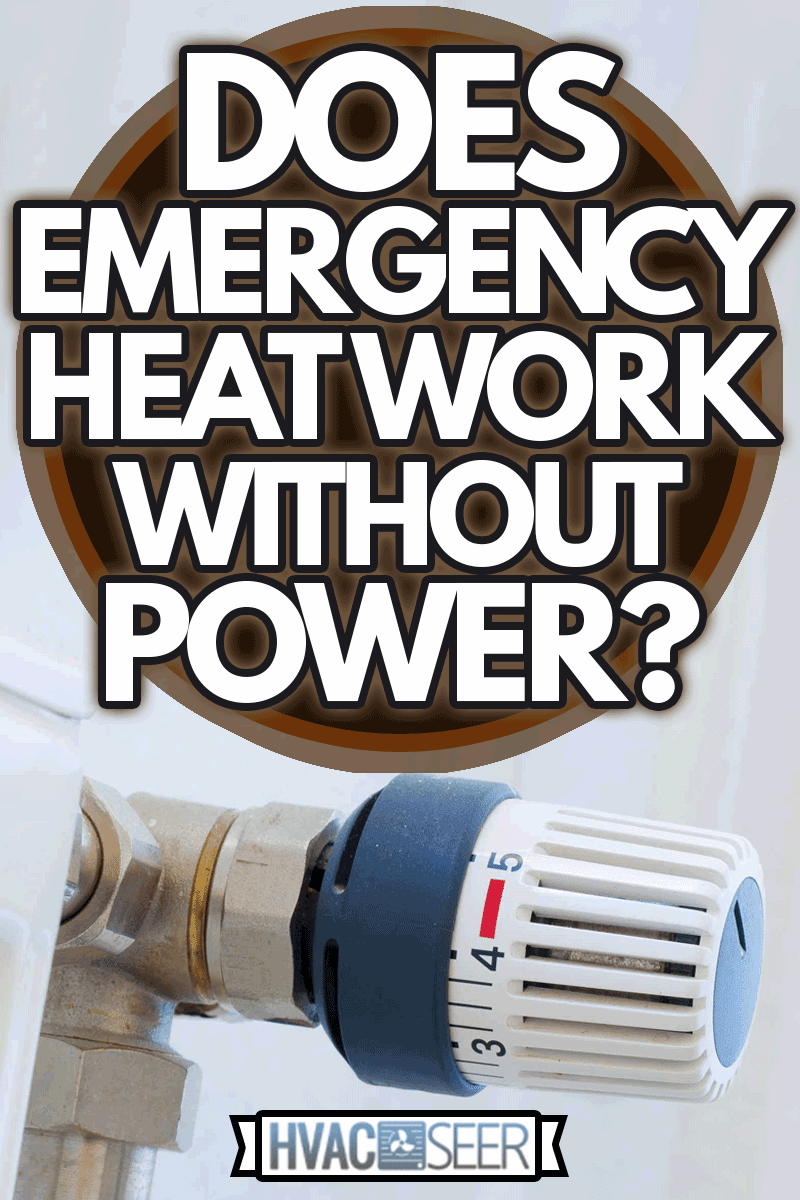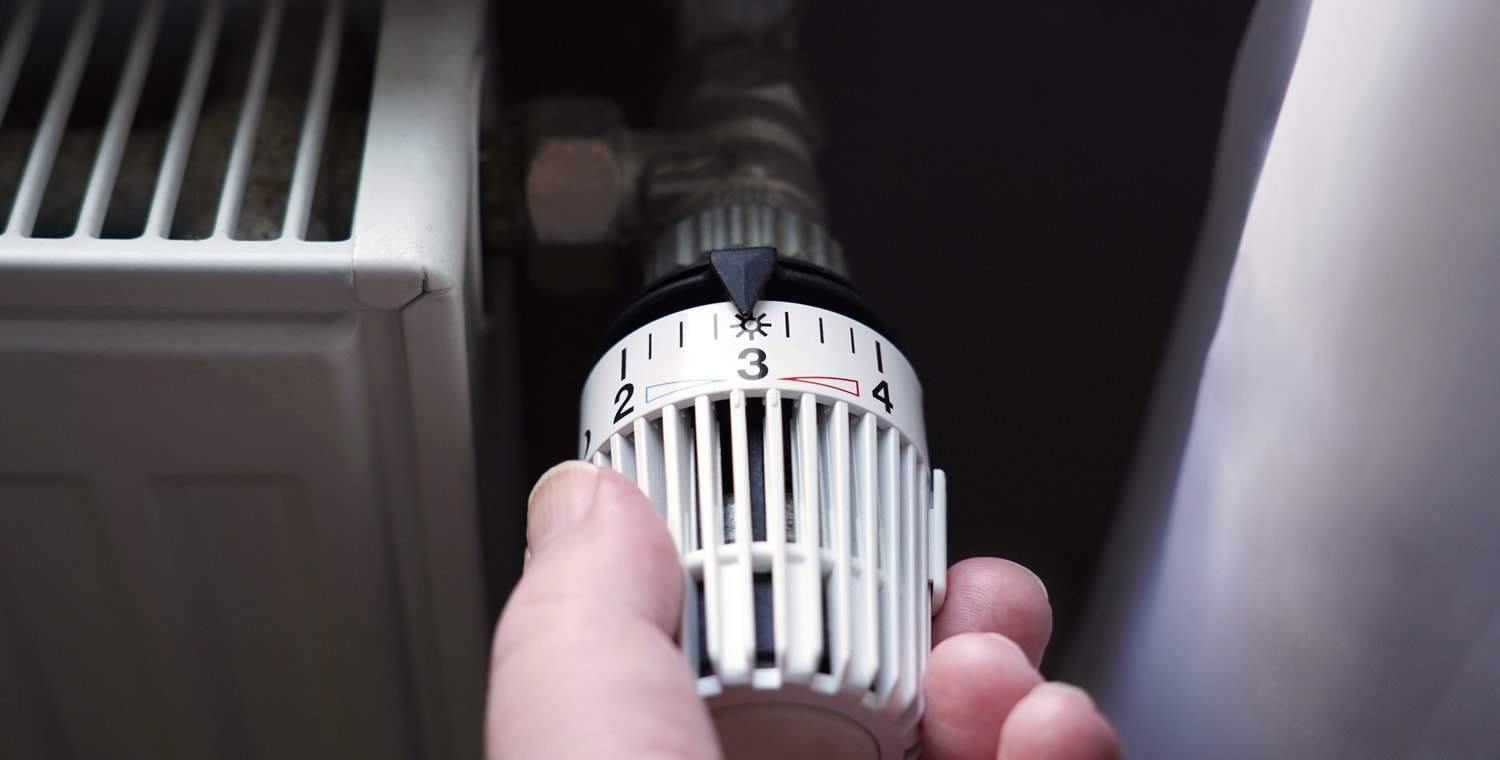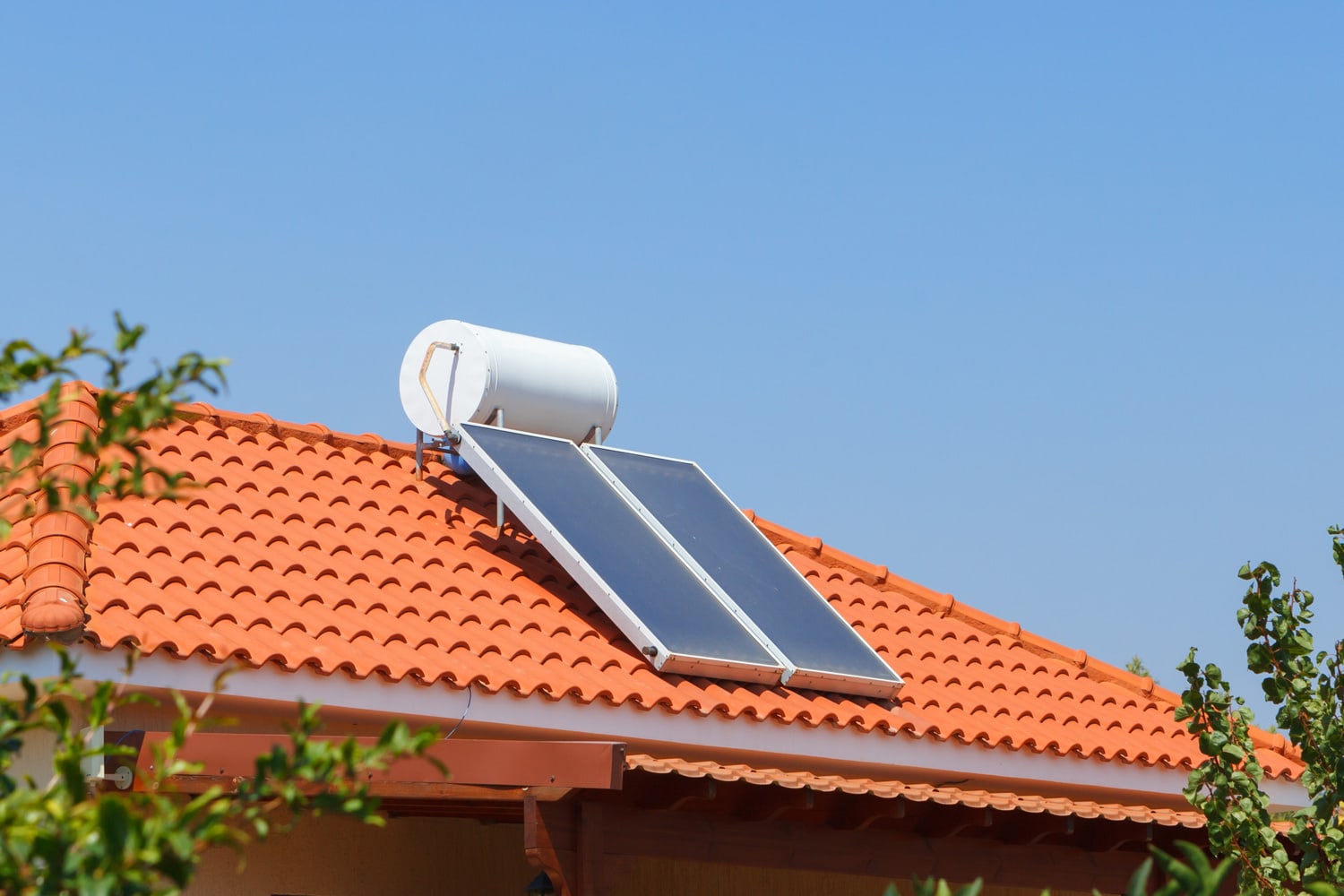A reliable heat source is a staple in most homes, especially in colder regions. Suppose your central heating system shuts down at some point due to a power outage. This might leave you wondering if you can use your emergency heat without power. To answer your question, we asked experts, and here's what they think.
For emergency heat to work, it needs a power source. Depending on your backup system, this could be electricity, gas, oil, or hot water. In most cases, it functions with electricity. When you switch to emergency heat on your thermostat, your system can directly use the electric heat strip.
Heat systems comprise different parts and units. Stick around and read further to learn how emergency heat works, including alternative power sources for your home.

Emergency Heat and Types of Units

A typical heat system consists of primary and secondary units. The primary unit is the main heat pump (usually outside the building), while the secondary unit is the emergency heat or EM heat, also known as the supplemental or backup unit.
EM heat is operated by a button you put on manually, which triggers an entire heating system differently from the outside heat pump. It could be powered by electricity, oil, or gas. It is used in emergencies when your heat pump can’t function due to extreme cold or breakage.
Your thermostat has two extra heat provisions other than the main heat pump outside your building, i.e., the auxiliary and emergency heating systems.
When Should Emergency Heat be Used?
As earlier stated, the primary unit stops working immediately when the temperature is two to three degrees below the threshold on your thermostat or when there is a power outage. Usually, before you switch to EM heat, an auxiliary unit works simultaneously with your heat pump, giving extra support and enabling it to defrost.
You will have to switch on the emergency heat on your thermostat manually. This means you have to check your thermostat to see if the emergency light is on, or you check your heat pump outside for any malfunction.
Don't forget it is an emergency heat, so you have to use it as such. It is not to be used as the primary heat source unless you are willing to pay exorbitant power bills (especially when it runs on electricity). Besides, emergency heat is not built to run long-term.
In case your heat pump is frozen and fails to defrost despite your heater being on, check outside for any physical damage. For example, a tree branch might fall on your heat pump in windy areas. In this case, you need to run routine maintenance or repair while switching to EM heat in the meantime.
How Does Emergency Heat Work?

Most heat pumps are equipped with an emergency heat switch which is turned on in emergencies. The EM heat follows another system or channel of heating separate from the heat pumps depending on its power source.
Switching it on prevents the heat pump from working, even if it defrosts in case it stops working due to freezing. It must be manually switched off before the heat pump can work.
Icons on Thermostat Display
The manual switching is usually after you have checked your thermostat indicator. The thermostat display consists of three icons. The “HEAT” icon indicates the primary unit or heat pump, while the “AUX” icon is the auxiliary or supplemental heat.
This supplemental heat works automatically with the main unit based on your thermostat calculation or programming. The thermostat determines when the main unit needs support and automatically switches on the supplemental unit to back it up. Because this process is automatic, you likely wouldn't notice.
The third icon on your thermostat is the "EM" icon which indicates the emergency heat. This icon appears when your heat pump and compressor can no longer compress air to produce heat.
The EM light is turned on and appears on the thermostat, telling you it's time to switch it on. Immediately you switch to the EM heat, your main heater and compressor automatically go off, enabling you to carry out necessary repairs while the EM heat keeps the house warm.
Can Emergency Heat Work Without Power?
All heating processes involve converting energy from one form to another. The amount of energy for this conversion depends on the energy being produced.
A heat pump converts and compresses hot air and passes it into the system (just the opposite of air conditioners). The EM heat depends on power. Its power source ranges from electricity (mainly) to even hot water.
What is the Difference Between Emergency Heat and Auxiliary Heating?
The auxiliary heating is an automated supplement to the main heat pump. Generally, the heat pump gets weaker and less effective as the weather becomes colder and the temperature drops. When your system reverses to defrost the coils, it automatically turns on the radiation strips to keep providing you warm air.
The thermostat is programmed to turn on the supplemental heating immediately when the outside temperature drops below the threshold -usually two to three degrees below the threshold. The process and calculations are automatic depending on what was programmed on the thermostat.
Key Differences
The automatic process is the key difference between auxiliary and EM heat. Most people are unaware of the activities behind the scene between the thermostat and heat pump regarding the auxiliary heating. This is because the process is automated, unlike the EM system, which must be turned on manually.
Another difference worth mentioning is the fact that the EM system consumes much more energy compared to the supplementary system. In fact, the auxiliary system works directly with the heat pump, which means it doesn't really have its own independent power source and has little effect on your bill.
How Long Can You Run on Emergency Heat?
You are meant to use the emergency heating system only in cases of emergencies. This means the use of the EM system should be as long as the repair on the main heat pump system takes place.
In case the heat pump freezes, the duration of your EM heat usage will be the time it takes to defrost if it's still working. It is not economical to run the EM heat for a long time, but that doesn't mean it can’t run constantly. It would only have economic consequences.
Aside from the high electricity bills, EM heat is also hard on your plumbing system as it bypasses the usual route for the main heat pump to provide heating.
Alternative Heat Sources During Power Outage

Below are some more economical alternative power sources you can use asides from emergency heat.
- Indoor kerosene heater: this is your go-to option when you are looking to cut your bills; it is very economical, just that you have to observe necessary safety measures, especially in a ventless setting.
- Propane heater: this is very effective and efficient as it can heat medium to large spaces using liquid propane as fuel. Newer models provide more than 90% efficiency. It is available in varying sizes.
- Pellet stove: this is fueled by pellet-based recycled sawdust or wood shavings. It comes in different sizes, enabling you to choose the most appropriate for your house.
- Catalytic heater: it is very safe for indoor use as it generates heat without flame.
- Solar heating: This relies on a thermal mass and a wide window facing the south. These two are used to trap solar energy, which is used to keep the house warm when the sunsets.
- Camping cooking bag: camp bags can warm up water for tea and cook pasta. It is a good option for staying warm.
- Home insulation: try insulating strategic areas of your house. It reduces the rate at which cold air diffuses into your house.
- Alcohol Heater: this is fueled by denatured alcohol. It burns cleanly and is safe to use indoors.
- DIY Heater: this is only ideal when you run out of heating options. You can make your heater at home with common home materials like candles and ceramic bowls.
- Wood Stoves: this is for those who have access to abundant firewood, but it is very effective and pocket friendly. It is best installed near the window, and a chimney pipe can be used in channeling out the smoke.
Conclusion
EM heat works with power. Your power choice should not be limited to the cost alone, you should consider the efficiency and safety of your choice as well. You can also try other alternative heat sources, but be mindful of hazardous options, especially if you have kids at home.
To read more about emergency heat, check out these engaging articles:
Does the Nest Thermostat Have Emergency Heat?
When and How to Use the Emergency Heat Setting on Heat Pumps
